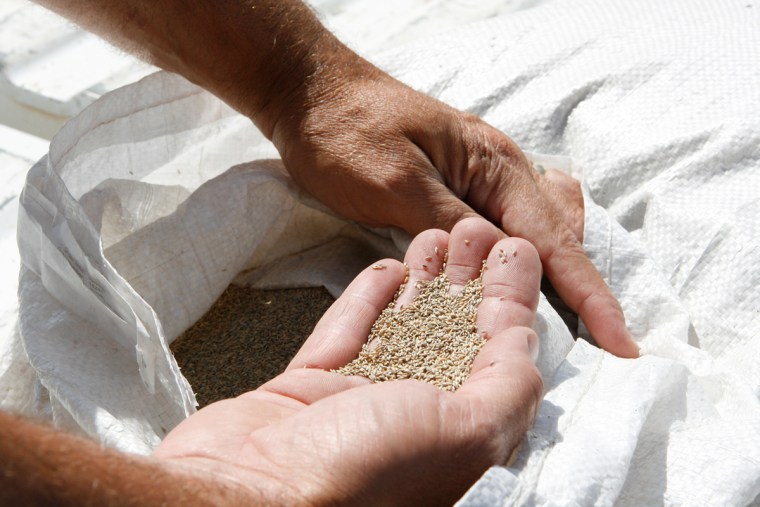Work has started on the planting of a 1,000-acre switchgrass field in the Oklahoma Panhandle that researchers plan to use in the production of cellulosic ethanol.
The field is being touted as the world's largest for switchgrass, a drought-resistant perennial plant that grows even on marginal lands. Scientists at the Noble Foundation in Ardmore are overseeing the project and hope that switchgrass proves to be a viable substitute for corn in ethanol production.
Hitch Enterprises, a Panhandle-based company, began planting the field earlier this month. Smaller fields of switchgrass also will be planted in central Oklahoma near Chickasha and Maysville.
"Rising food costs recently resulted in a pushback against renewable fields," said David Fleischaker, the state's energy secretary. "However, cellulosic ethanol from sources like switchgrass and sorghum are noncompetitive with food sources for animals and humans."
The crop from the field will be cut and sent to a new biorefinery that will be built by Abengoa Bioenergy of Hugoton, Kan., just across the state line from Guymon. The biorefinery should be ready for use by 2010.
The Noble Foundation is working with the Oklahoma Bioenergy Center, the University of Oklahoma and Oklahoma State University on the switchgrass project.
Noble Foundation spokesman Adam Calaway said researchers expect to harvest about 30 percent of the crop during the first year after planting, 70 percent the year after that and 100 percent starting with the third year.
The Panhandle field will include both irrigated and dry-land crops for research purposes.
"We did it irrigated to ensure that we get a crop and are able to study it," Calaway said. "You don't have any guarantees with the dry land. You're really dependent on Mother Nature."
He said the goal is to have production of ethanol made with switchgrass "up and going" by 2017.
"The whole goal is to displace 30 percent of the oil we import," he said. "If you displace that much it helps us financially, so you think of the billions of dollars we'll save and be able to put back into agriculture. You can imagine how much that would revolutionize agriculture."
